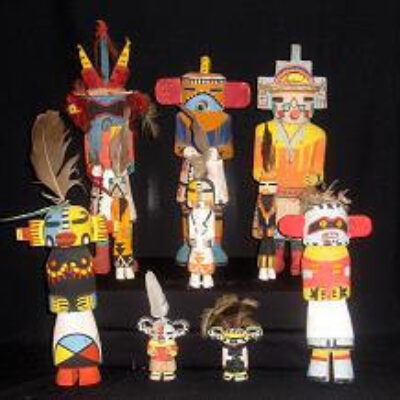
For its August Treasure of the Month, the Rosenberg Library exhibited a selection of early 20th century Pueblo Indian kachina dolls from the museum collection. Kachina dolls represent the kachina spirits, or gods, that the Pueblo Indians believe influence their daily lives. In the Pueblo religion, there are more than 300 different kachina deities, all with unique characteristics. Kachinas can be identified by their shape, color, and ornamentation.
The word “kachina” (sometimes spelled “katsina”) actually has three different meanings. The first refers to the supernatural entities that the Pueblo people believe to have influence over nature. The second meaning refers to men from the tribe who wear costumes to represent these spirits at ceremonial events and dances. The third references the masked dolls which are made for Pueblo children.

Kachina dolls were given to children as a way to teach them about the Pueblo system of beliefs and values. Traditionally, the carving of kachina dolls was the work of male artisans. Authentic dolls are made of cottonwood root, which is easy to carve but also very durable. It was not until the late 19th century that Indian tribes began to sell kachina dolls at trading posts. The dolls became popular collectibles for tourists, and even today, they are highly prized in the Native American crafts market.
Photo Captions:
1. Large kachina doll with an elaborate headdress of feathers and buffalo horns (gift of William and Viola Pabst).
2. Assortment of various kachina dolls (gift of William and Viola Pabst).